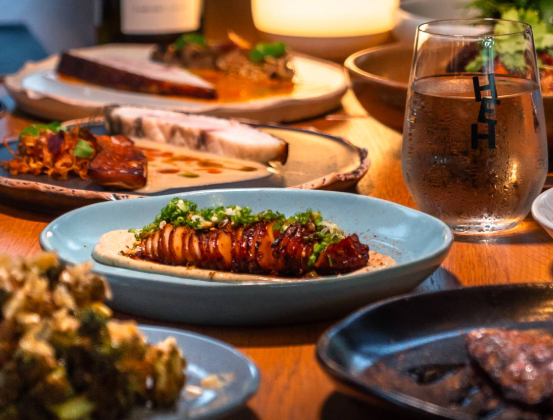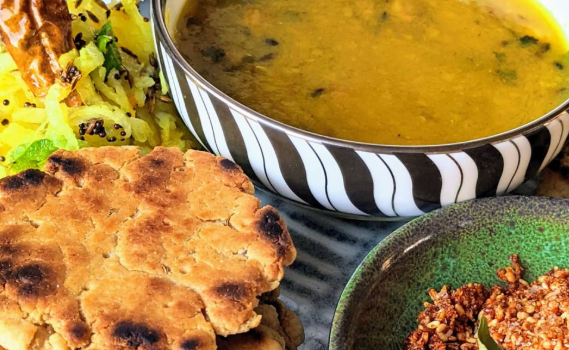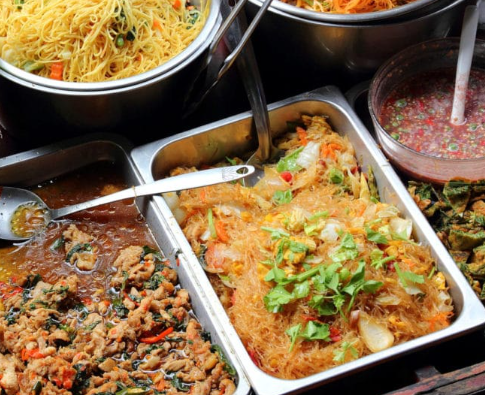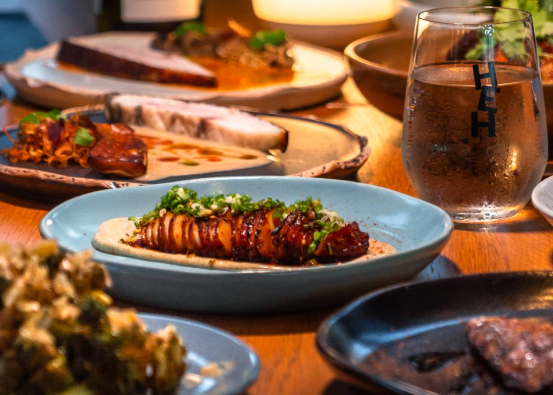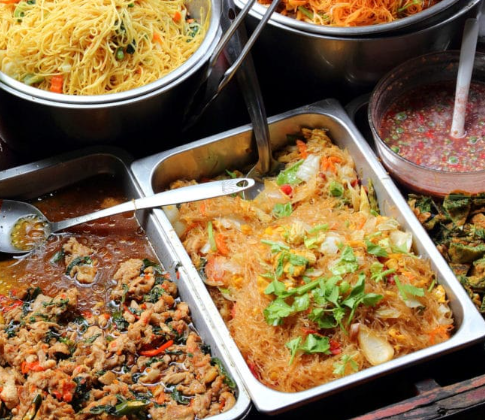
Indian cuisine stands as one of the world’s most fascinating and diverse. Its unique blend of flavors, textures, and aromas continues to draw food lovers from all over the globe. For me, the most exciting part of any visit to India is undoubtedly the food. It’s not only delicious but also deeply rooted in culture, with influences from centuries of history and trade. My journey with Indian food, however, began long before I set foot on Indian soil, during my travels in Southeast Asia where Indian culture, particularly food, has been widely embraced. From Sri Lanka to Singapore, I tasted authentic Indian dishes that sparked my passion for the country’s cuisine. This post is an introduction to eating in India, aiming to shed light on some of the essentials you’ll encounter.
1. Roti and Other Flatbreads
Flatbreads play a central role in Indian dining. Among them, Roti stands out as the most basic yet essential bread in Indian cuisine. This simple, griddled flour bread is eaten throughout India and Southeast Asia. It’s the foundation for many variations, such as Paratha, which is thicker and sometimes stuffed with fillings. Another popular one is Puri, a deep-fried version that’s puffier than the rest. Then there’s Chapati, a thinner, lighter alternative to Roti. These breads are typically served with almost every meal, acting as a side to curries and lentil dishes.
2. Dal – The Comforting Lentils
Dal, a cooked lentil dish, is a staple across South Asia, from Sri Lanka all the way to the Himalayas. Though it may seem a bit bland at first, adding spices and chilies transforms it into a delicious, comforting side dish. In fact, Dal is so versatile that it can be eaten as a breakfast item, and it pairs wonderfully with rice or flatbreads.
3. Tandoor Cooking – The Magic of the Clay Oven
The Tandoor is a traditional clay oven that has revolutionized the way food is prepared in India. Many famous Indian dishes are cooked in the Tandoor, including Tandoori Chicken and Chicken Tikka. The cooking method involves skewering the chicken and smoking it in the hot Tandoor, resulting in a crispy exterior and tender interior. The key difference between Chicken Tikka and Tandoori Chicken lies in their preparation. While Tikka consists of boneless pieces marinated in yogurt and spices for a short period, Tandoori Chicken is marinated for hours and often served with bone. Naan, a soft, fluffy flatbread, is also baked in the Tandoor, making it a favorite side.
4. Mutton – The Meat of Choice
In India, mutton (or sheep meat) is more commonly eaten than other meats. With pork prohibited by Islam and beef avoided by Hindus, mutton is the go-to choice for non-vegetarians. When slow-cooked, mutton becomes incredibly tender and flavorful. In the West, lamb (young sheep) is often preferred, but in India, mutton is enjoyed by all, and it’s a common dish on non-vegetarian menus.
5. Paneer – The Indian Cottage Cheese
One of the best meat substitutes in Indian cuisine is Paneer, a fresh cheese made from full-fat milk. It is incredibly versatile and can be added to many curries, providing a rich, satisfying taste. My personal favorite is Mattar Paneer, where cubes of Paneer are cooked with peas in a spiced curry sauce. Another popular dish is Palak Paneer, where the cheese is mixed with spinach to create a creamy, flavorful dish.
6. Aloo – The Beloved Potato
In Indian cooking, Aloo (potato) is a common ingredient in vegetarian dishes. It’s often used in curries, and Aloo Paratha (stuffed flatbread) is a popular breakfast dish. One of the standout potato dishes is Dum Aloo, a Kashmiri specialty that’s packed with spices and slow-cooked to perfection. It’s rich, flavorful, and hard to beat.
7. Biryani – The Spiced Rice Dish
Although rice is a staple food in India, many prefer the richness of Biryani, a dish where rice is layered with spiced sauces. The beauty of Biryani lies in its depth of flavor, and it’s often paired with Tandoori chicken. Various regional versions exist, but the essence of Biryani is the combination of perfectly cooked rice, meat, and spices.
8. Chana – Chickpeas in Indian Cuisine
Chickpeas, or Chana, are another staple in Indian vegetarian cooking. Known for their versatility, chickpeas are used in a variety of dishes, with Chana Masala being one of the most popular. The slightly larger Kabuli Chickpeas are often used in curries, while the smaller Kala Chana (Black Chickpeas) is also widely enjoyed for its heartiness and satisfying texture.
9. Masala – The Heart of Indian Flavor
The term Masala simply refers to a spice mix and plays a central role in Indian cooking. While many people associate Masala with rich, saucy curries, it’s often used in dry dishes as well, such as Peanut Masala and the iconic Masala Omelette. Masala can be a blend of various spices like cumin, coriander, and garam masala, adding incredible depth to dishes.
10. Thali – A Mixed Plate of Everything
A Thali is a traditional Indian meal that consists of a variety of dishes, all served on one large plate. The selection can vary from region to region, but you can expect a combination of flatbreads, rice, curry, vegetables, chutneys, and pickles. Thali is a great way to sample a little bit of everything, offering a comprehensive taste of Indian cuisine in one meal.
Indian food is not just about the spices and ingredients; it’s about the experience. Every meal is a journey, a celebration of culture and tradition that is as varied as the land itself. From street-side snacks to elaborate dishes, there’s always something new to discover in India’s culinary world. Whether you’re a vegetarian or a meat lover, there’s a dish for everyone, and the diversity of Indian food ensures that each meal is an adventure in itself.

